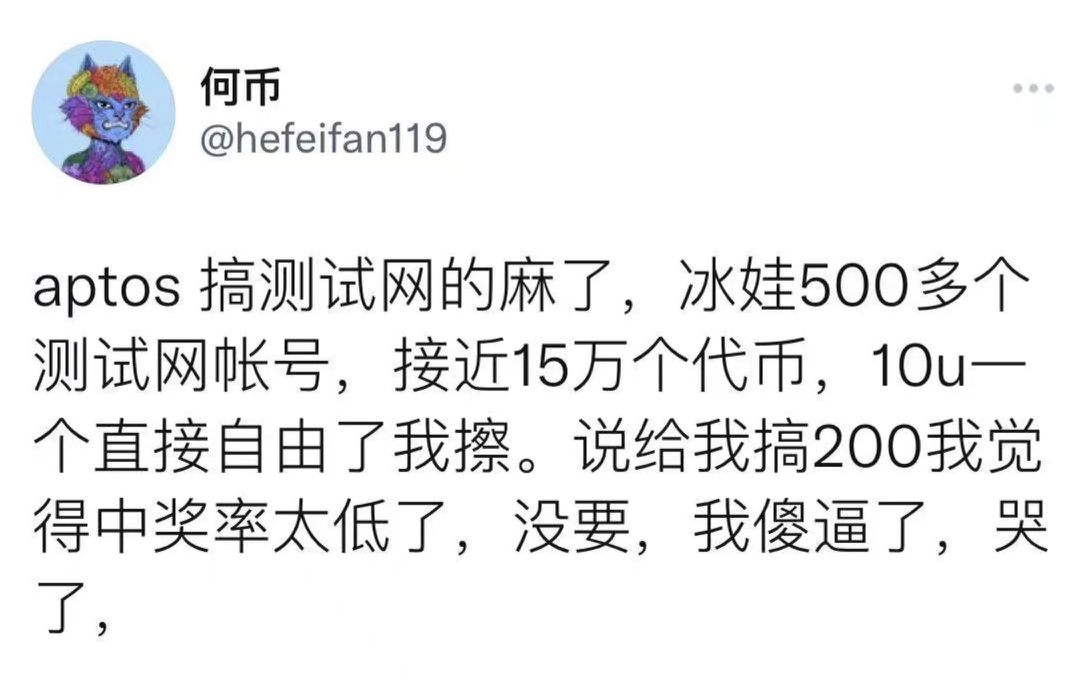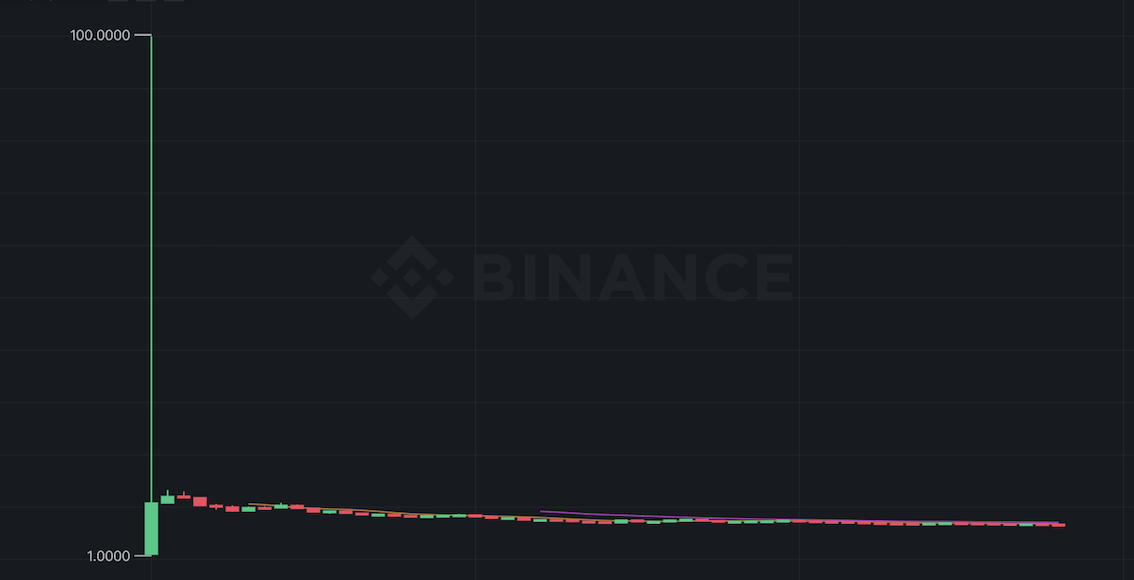After the unconventional airdrop of Aptos, the opportunists scored a big win
Title: "Aptos Airdrop Launch, 'Scientists' Achieve Victory"
Author: Joy, PANews
After a day of questioning from the community on October 18, Aptos officially announced the airdrop plan at 6:50 AM Beijing time on October 19. However, this group of strong developers from Facebook seems to have not fully understood the gameplay and spirit of the Web3 community.
Email Notification, Mocked as W eb 2 Operation
The Aptos Foundation announced an airdrop of APT tokens for early network participants. Users who completed the application for the Aptos incentive testnet or minted the APTOS:ZERO testnet NFT are eligible to claim Aptos tokens (the original users who minted the NFT are eligible, not the current owners) and will receive an email from airdrop@aptosfoundation.org within the next few hours. A total of 20,076,150 APT tokens will be airdropped to 110,235 participants.
At the same time, the official reminder stated that there are no other airdrops or giveaways for Aptos tokens, and users should only trust official sources and channels; Aptos tokens can only be claimed through the official Aptos community page and information will be provided in the emails of eligible users.
Although the official provided security reminders, notifying users via email was still mocked by the community as too Web2, and there is indeed a risk of email phishing.
Prior to this, the Aptos community was rife with discussions, questioning the lack of transparency and excessive centralization. Aside from the testnet nodes that are confirmed to receive token rewards, it remains uncertain whether other community users, such as those participating in node competitions or those who minted or purchased NFTs, will receive any tokens. PANews also mentioned in yesterday's article that according to the economic model released by the official, the community (51.02%) tokens are also held by the foundation and Aptos Labs, accounting for a total of 86.52% of the current or held token supply.
Therefore, it is still unclear whether the large-scale distribution of the airdrop was a premeditated decision or a temporary decision made in response to community pressure. However, the announcement came just 3 hours before trading began on exchanges, leaving users insufficient time to claim the tokens, which is indeed unfriendly to many latecomers in the domestic crypto community.

In addition, the Aptos Foundation clarified the respective responsibilities of Aptos Foundation and Aptos Labs. The Aptos Foundation will focus on the development of the Aptos network and ecosystem, with the main goal of supporting the development of the Aptos blockchain. The foundation will be responsible for formulating grant programs, promoting Aptos globally, and nurturing the Aptos ecosystem. Aptos Labs will focus on building infrastructure on the Aptos network, with the Petra wallet and the official domain service Aptos Name Service being two products developed by the Aptos Labs team.
No Defense Against Witch Attacks, Wool Gatherers / Scientists Win Big
As soon as the airdrop news broke, some were happy while others were worried.
Screenshots circulated on Twitter and in the community showing wool gatherers flaunting hundreds of accounts to apply for the testnet, with some even declaring that they had graduated from Web3 after creating thousands of accounts, achieving financial freedom in one fell swoop. According to community users who claimed tokens, each testnet application account could receive 300 tokens, while users who minted NFTs received 150 tokens. One hundred accounts could earn 30,000 tokens, and one thousand accounts could earn 300,000 tokens. It’s hard not to feel envious?

Screenshots shared by community users claiming the airdrop
Others lamented, thinking that the competition for the testnet applications would be so fierce that they wouldn't be selected, only to find out that participation alone would earn rewards.

In fact, preventing witch attacks has been a common practice for projects during token airdrops this year. For example, Optimism excluded 17,000 witch addresses during its token airdrop. However, surprisingly, Aptos did not exclude witch addresses, first failing to distribute tokens to real and valid users, and the direct negative impact was the enormous selling pressure.
Due to the community's dissatisfaction with Aptos's centralized operations at launch and its high valuation, based on its total token supply of 1 billion, the price reached $15, resulting in a fully diluted market cap exceeding that of Solana. Although Aptos is referred to as the successor to the Solana ecosystem, the prosperity and completeness of its ecosystem still lag far behind Solana.
From Binance's trading trends, it is evident that the community was unable to absorb the massive selling pressure. After launching, the price spiked to $100 before quickly dropping back to around $10, and then continued to decline to about $6. According to Wu Says Blockchain analysis, after Aptos went live on Binance, there was a massive sell-off, with a single sell order at $13 for 189,567 APT, resulting in a profit of $2.46 million, directly crashing the APT price from $15 to below $13. Such reckless dumping is a direct consequence of Aptos's failure to prevent witch attacks.

Choosing to launch the mainnet in a bear market shows Aptos's determination to be the "evergreen pine and cypress," but it seems that Aptos has focused too much on how to increase TPS, even though the current real-time TPS of the network is only 24. The hasty announcement of the mainnet launch and the low transparency of its operational style have drawn criticism from the community. Let’s not forget why the crypto community started out.










